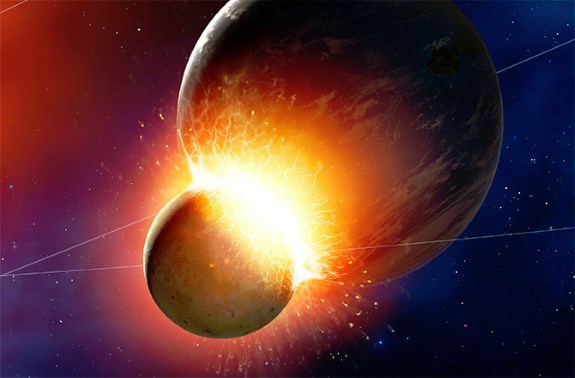The discovery solves the long-standing mystery why Earth and the Moon are so alike in terms of composition. Using advanced computer simulations, astronomer Alessandra Mastrobuono-Battisti and her team concluded that Theia and Earth must have had the same chemical composition and that this is not a rare event. In fact, the study claims that on average, impactors are more similar to the planets they impact compared with different planets in the same solar system.
Using advanced computer modeling, Mastrobuono-Battisti and colleagues ran dozens of simulations of later-stage planet formation, each time starting with 85- to 90 planetary embryos and 1,000 to 2,000 planetesimals extending from about halfway between the orbits of Mercury and Venus to within 50 million miles or so of Jupiter’s orbit.
Within 100 million to 200 million years, each simulation typically produced three to four rocky planets as a result of colliding embryos and planetesimals, the scientists found. Looking particularly at the last moon-forming impact scenarios, the scientists assessed the likelihood that Theia and Earth had the same chemical composition.
“It turned out it is not a rare event … On average, impactors are more similar to the planets they impact compared with different planets in the same system,” Mastrobuono-Battisti said.

Source: Discovery